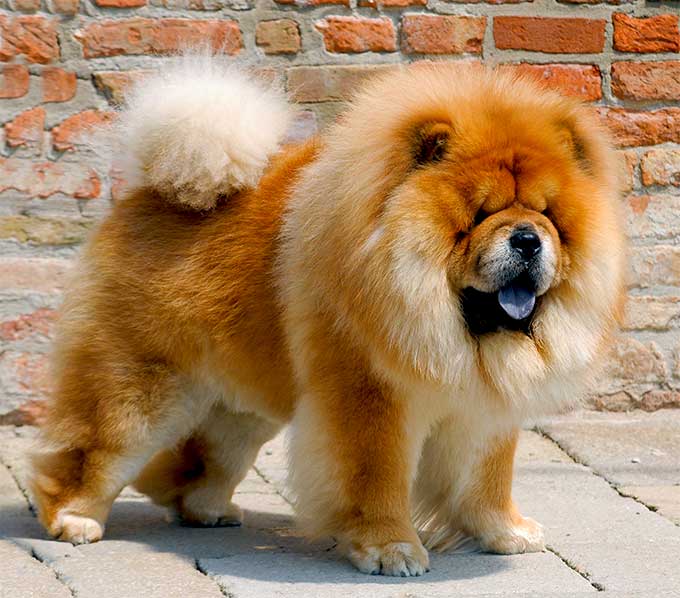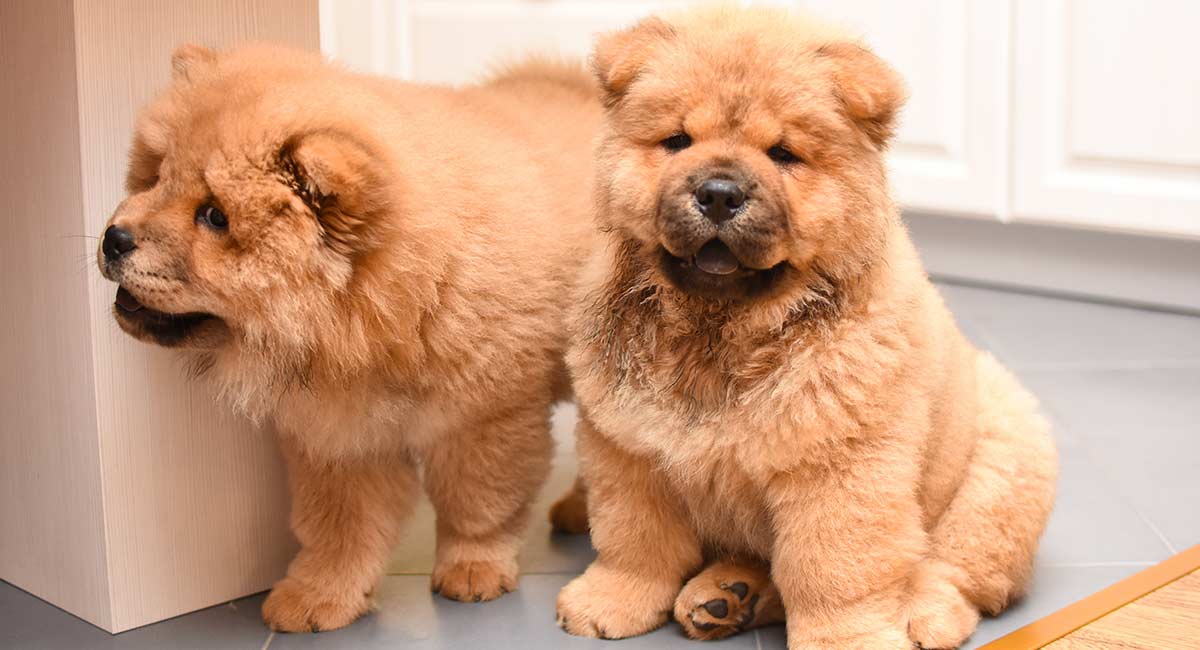 The Chow Chow, among the world’s most singular and possibly oldest breeds, is depicted in artifacts of China’s Han Dynasty (c. 206 b.c.), but evidence suggests Chows go back much further and are progenitors of other spitz-type breeds—from the burly Norwegian Elkhound to the dainty Pomeranian. Chows have played many roles during their long history. At times, they were the lordly companions to Chinese nobles. An emperor of the Tang Dynasty, circa eighth century, was said to have owned a kennel facility that housed some 5,000 Chows and a permanent staff of twice that number. But over the centuries they also earned their keep as guarders, haulers, and hunters. Their ancestors were even a food source in the distant past of their densely populated, protein-starved homeland.
The Chow Chow, among the world’s most singular and possibly oldest breeds, is depicted in artifacts of China’s Han Dynasty (c. 206 b.c.), but evidence suggests Chows go back much further and are progenitors of other spitz-type breeds—from the burly Norwegian Elkhound to the dainty Pomeranian. Chows have played many roles during their long history. At times, they were the lordly companions to Chinese nobles. An emperor of the Tang Dynasty, circa eighth century, was said to have owned a kennel facility that housed some 5,000 Chows and a permanent staff of twice that number. But over the centuries they also earned their keep as guarders, haulers, and hunters. Their ancestors were even a food source in the distant past of their densely populated, protein-starved homeland.
The chow chow is a square dog with post-like straight legs. The straight legs contribute to a somewhat stilted gait, it has erect ears, a broad skull and a tail curled up over the back, and of course the blue/black tongue. The facial wrinkles (often obscured by hair) give the chow chow a scowling expression. For his size, the chow chow is a strong, sturdy dog.
It has two coat types. We are most familiar with the rough or long coat. This is a straight, off-standing coat, which gives chow chow puppies a fuzzy, teddy bear appearance. The smooth coat is a shorter variation. Both coat types have a dense undercoat. Chow chows are most commonly seen in red or black coloration, but any solid color is acceptable.
According to their past history, the Chow Chow is not a breed for everyone. Famously stubborn and potentially aggressive, this breed is likely to become a ‘problem dog’ in the hands of a novice owner. Chows are independent and dominant by nature, and in order to enjoy a happy relationship with their owners, need to be kept under control and in a submissive role. However, in the right hands, Chow Chows can be obedient and loyal pets. They are not especially playful, but rather play the role of an aloof and elegant companion, fond of affection but not fuss. They can be fierce guard dogs, as they are naturally distrustful of, and even aggressive towards, strangers and other animals. An important part of responsible Chow Chow ownership is early and intensive socialization to avoid these characteristics becoming a problem later in life.
Chow Chows are prone to quite a number of health and behavioral disorders, here we listed some of the most common disease found in Chow Chow.
Alopecia: Alopecia in dogs can be the result of skin infections such as ringworm (a fungal infection), a bacterial infection or parasites such as mites, and is often the result of the dog scratching or licking an itchy or sore area. Chows are prone to several conditions resulting in alopecia (baldness), including Colour Mutant Alopecia and Alopecia X.
Thyroid Problems: Chow Chows are prone to a common condition called hypothyroidism in which the body doesn’t make enough thyroid hormone. Signs can include dry skin and coat, hair loss, susceptibility to other skin diseases, weight gain, fearfulness, aggression, and other behavioral changes.
Heart Disease: Some breeds, like your Chow Chow, can be born with a variety of heart defects. Most affect the structure of the heart’s dividing wall or the vessels of the heart. Defects can also cause problems with heart valve function or the electrical signals that control the heartbeat.
Melanoma: A cancer of the cells producing skin pigment (melanocytes). Uncommon, but Chows are predisposed because of their oral pigmentation.
Diabetes: Diabetes mellitus is a fairly common disease in dogs. Any breed can be affected, but Chows have an above average incidence. Dogs with diabetes are unable to regulate the metabolism of sugars in their bodies and require daily insulin injections. Diabetes is a serious condition and one that is important to diagnose and treat as early as possible.
Sources: https://www.freeportvet.com/services/dogs/breeds/chow-chow
https://www.dogzone.com/breeds/chow-chow/
Photo credit: https://dogtime.com/dog-breeds/chow-chow#/slide/1

